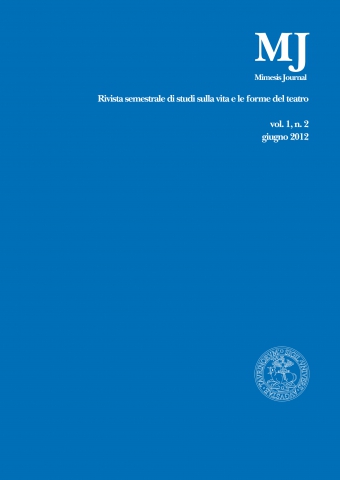Sistematurgia. La quarta parete e lo schermo
DOI:
https://doi.org/10.4000/mimesis.234Parole chiave:
digital performance, multimedia, interactivity, Marcel·lì Antunez RocaAbstract
The interview has been recorded in three days in Barcelona, during the rehearsals of Pseudo, the last performance of Marcel•lí Antúnez Roca. Starting from the creative process he has followed to produce the show, the conversation aims to describe a larger picture of the methodology of the Catalan artist and focuses on his idea of interactive narrative. It starts from the use of projection screens intended as a space for his grotesque cartoon characters to live, and describes the ongoing – almost all along his career – effort to invent a new space for the whole performance. Moreover, the artist defines his idea of Sistematurgy, a neologism he created from the fusion of Systems of computers and digital devices, and Dramaturgy as narrative organizing principle of the performance. This is the heart of the interview and interweaves problems regarding the theory and praxis of interactivity and the role of the audience in contemporary performance. It emerges that Marcel•lí Antúnez Roca, albeit coming from a fine art background, and although growth within the Fura del Baus, in the last decades has been more and more dedicated to the multimedia dramaturgy of the digital performance, trying to hybridize the event-like nature of his interactive performance, with the delivery of a clear sense and meaning of the storyteller.


